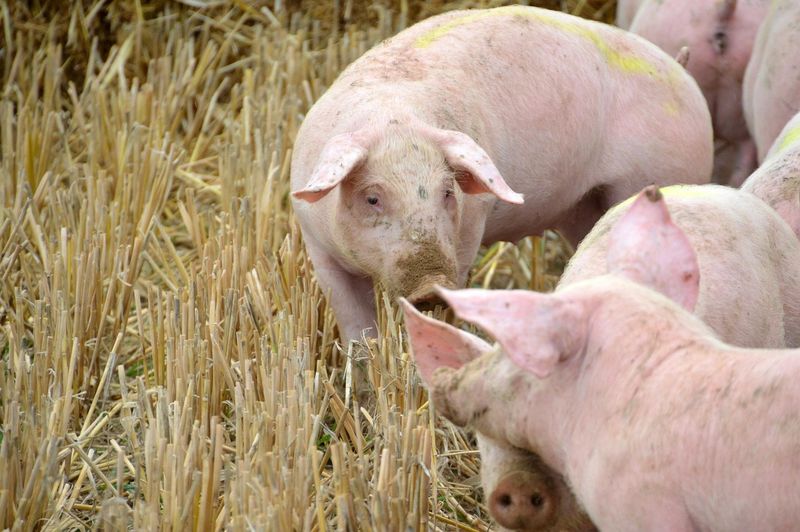
African Swine Fever: A Global Update – July 2025
This report provides a clear and comprehensive overview of the current global situation regarding African Swine Fever (ASF), with a focus on recent outbreaks, regional responses, and developments in vaccine strategies.
This report provides a clear and comprehensive overview of the current global situation regarding African Swine Fever (ASF), with a focus on recent outbreaks, regional responses, and developments in vaccine strategies. Information is gathered from multiple July 2025 sources to deliver a single, up-to-date reference for industry stakeholders.
Introduction
As of July 2025, African Swine Fever (ASF) continues to affect the global pig industry with varying intensity across regions. From renewed outbreaks in parts of Europe to widespread losses in Asia, ASF remains a serious threat to animal health, trade stability, and food security.
This report consolidates the most recent updates available from July 2025. While every effort has been made to include key developments, this reflects what we were able to find from publicly accessible sources at the time of writing. Regional nuances, unreported cases, or lagging updates may not yet be visible in the data.
Europe: Low Domestic Cases, New Farm Outbreaks in Poland
In 2025, the European Union has seen a continued decline in ASF cases among domestic pigs. According to the European Food Safety Authority (EFSA), outbreaks dropped by 83% in 2024 compared to 2023. This decline reflects improved biosecurity, early detection, and containment measures across affected member states.
However, wild boar populations remain a persistent reservoir, with 7,000–8,000 cases reported annually. These cases continue to pose a threat of spillover into domestic herds, particularly in areas where pig farming overlaps with forested or rural land.
Despite the general decline, Poland has recorded its first ASF outbreak on a commercial pig farm in 2025. The outbreak occurred near Gdańsk, marking the 553rd and 554th confirmed farm cases since ASF was first detected in the country in 2014. These new cases were reported in early June, raising concerns about localized lapses in containment and the enduring challenge of cross-species transmission.
Asia: Ongoing Struggles and Widespread Losses
Vietnam: Resurgence Across 28 Provinces
Vietnam is currently facing a significant ASF resurgence, with outbreaks reported in 28 out of 34 provinces. As of July 2025, the country has seen 514 recorded outbreaks, leading to the culling of over 30,000 pigs. While a vaccine exists, uptake remains low—estimated at around 30% in some regions—due to a mix of cost, availability, and confidence concerns. The Vietnamese government has issued urgent directives aimed at improving local containment and speeding up vaccinations.
India: Mizoram Faces Major Losses
In Mizoram, a northeastern state of India, over 5,900 pigs have died since March 2025 due to ASF. The outbreak has now spread across five districts and more than 90 villages. On a single day alone, officials reported 117 pig deaths, including in areas where ASF had never been detected before. The spread appears to be intensifying, with state veterinary officials under pressure to control the outbreak amid logistical and communication challenges.
FAO Regional Overview: Asia-Pacific Still at Risk
According to a recent update from the Food and Agriculture Organization (FAO), the Asia-Pacific region has seen 324 outbreaks in 2025 so far, with more than 11,000 pigs culled. In addition to Vietnam and India, recent cases have been confirmed in Thailand, Cambodia, Laos, Bhutan, Nepal, and Myanmar. These figures point to a persistent and widespread challenge across the region.
East Asia: Biosecurity Tightens in South Korea
South Korea confirmed its fourth ASF outbreak of 2025 on July 16 at a pig farm in Paju, Gyeonggi Province, home to 2,500 pigs. Authorities immediately imposed a 48-hour movement standstill in the area, and all infected animals are being culled. These repeated outbreaks are expected to place upward pressure on pork prices and highlight the continuing risk of ASF re-emerging in high-biosecurity environments.
Global Strategy and Vaccine Development
In July 2025, the World Organisation for Animal Health (WOAH) formally adopted international standards for the production and evaluation of ASF vaccines. This is seen as a critical step forward in global disease preparedness, paving the way for more consistent vaccine rollouts and better international coordination.
Research published in Nature Communications and other scientific journals in July has also raised new questions about ASF immune responses, particularly the risks of antibody-dependent enhancement (ADE). At the same time, efforts are underway to develop next-generation vaccines, including DNA-based and virus-vectored candidates. However, experts continue to emphasize that vaccines alone are not a silver bullet — robust surveillance, reporting, and biosecurity remain essential.
Conclusion
ASF remains a major global concern in July 2025. While parts of Europe are seeing a decline in domestic pig cases, new outbreaks on farms remind us the threat is not over. In contrast, Asia continues to grapple with high infection rates, regional spread, and significant economic losses. Progress on the vaccine front is encouraging, but uneven adoption and implementation will likely remain a challenge in the months ahead.
This report captures the current known status based on accessible public information. We’ll continue to monitor new developments as they emerge.
Sources Used:
https://www.fao.org/animal-health/situation-updates/asf-in-asia-pacific/en
https://www.pigprogress.net/health-nutrition/health/asf-poland-first-farm-outbreak-in-2025/
https://www.thepigsite.com/news/2025/05/asf-outbreaks-in-eu-pigs-drop-sharply-says-efsa
https://www.star-idaz.net/news/woah-adopts-international-standards-for-african-swine-fever-vaccines/
https://globalbiodefense.com/2025/07/22/asf-research-2025-vaccine-immune-evasion/
